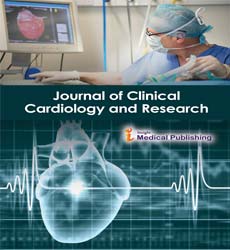Relaxation times, 1.5 t, in healthy Latin American patients
Abstract
The Cardiac magnetic resonance (CMR) is an invaluable tool for diagnosis and risk stratification in a wide spectrum of heart diseases. To determine the reference values of myocardial T1 relaxation times, T2 and T2*, in our population to justify their clinical interpretation in the tissue evaluation of different cardiovascular diseases. We included, 27 healthy volunteers (13 men and 14 women) between 25 and 69 years of age. A short CMR protocol was performed in a 1.5 T resonator, using the MOLLI technique, in T1 mapping. The global and segmental T1 values were quantified, using the American Heart Association (AHA) model, for the entire left ventricle, in three short-axis slices (basal, middle, and apical). The post process and analysis of the data with the commercialized software, Cvi42. The mean global myocardial T1 value was 1069.41 ms with a SD of 38.73 ms. Among the age groups, the group <34 years had the lowest global T1 values (1057 SD 33 msec), and the group of 35 -44 years obtained the highest values (1100 SD 50 msec), so no relationship was found between the linear increase in age and the variability of relaxation times. Between both sexes, men had lower global T1 values than women (1049 vs 1086). Regarding the value of T2, our average was 51.58 msec. Finally, T2*: 36.61 msec. The native T1 ranges can serve as a basis for the quantitative characterization of the myocardium in the context of focal or diffuse diseases, in patients with infarcts, storage and inflammatory diseases. Therefore, we consider that we have presented the only database of myocardial T1 relaxation times carried out in a healthy Latin American population, and it is a fundamental need for its subsequent comparison with studies in populations with similar characteristics.
Open Access Journals
- Aquaculture & Veterinary Science
- Chemistry & Chemical Sciences
- Clinical Sciences
- Engineering
- General Science
- Genetics & Molecular Biology
- Health Care & Nursing
- Immunology & Microbiology
- Materials Science
- Mathematics & Physics
- Medical Sciences
- Neurology & Psychiatry
- Oncology & Cancer Science
- Pharmaceutical Sciences
